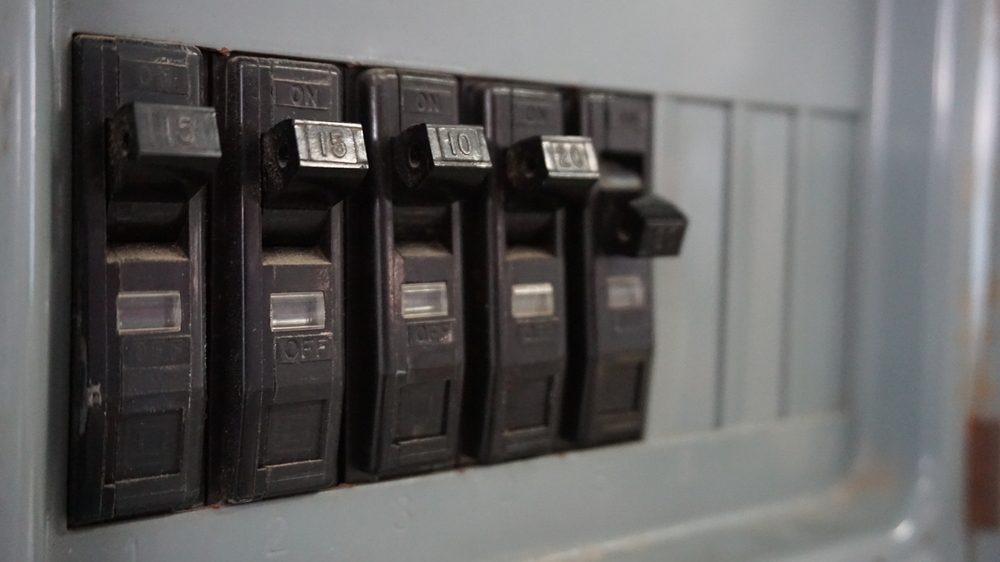So, why does your breaker keep tripping?
It's a common question that many homeowners in Southern Maryland face, often followed by a mix of frustration and curse words.
Circuit breakers are crucial for your home's electrical safety, acting like protectors that shut off power when they detect a problem.
But when they trip frequently, it's more than just an inconvenience; it's a sign that something's not right in your electrical system.
Understanding the reasons behind this can help you address the issue effectively and ensure your home remains safe and your electrical system functions properly.
Let's dive in.
What is a Circuit Breaker and How Does It Work?
A circuit breaker is a safety device designed to protect your home's electrical circuit from damage caused by overload or a short circuit.
Its basic function is to interrupt the flow of electricity the moment a fault, like an excessive current, is detected in the electrical system.
Think of it as a vigilant watchdog of your electrical system.
When everything is running smoothly, the breaker allows electricity to flow uninterrupted.
However, if the current flowing through the circuit exceeds a safe level, the breaker steps in, cutting off power to prevent damage to the circuit, appliances, and, most importantly, to prevent electrical fires.
This automatic shutdown is what you experience when a breaker 'trips'.
Resetting the breaker restores the power – but if the underlying issue isn't resolved, it's likely to trip again.
Understanding why a breaker trips is key to maintaining a safe and functional electrical system in your home.
Common Reasons for a Breaker Tripping
#1. Overloaded Circuit
An overloaded circuit is one of the most common reasons for a breaker tripping.
This happens when too many appliances or electrical devices run simultaneously on the same circuit, drawing more power than the circuit can handle.
Signs of an overload include flickering lights, buzzing sounds from outlets, or appliances that seem underpowered.
When the current surpasses the circuit's capacity, the breaker trips to prevent overheating, which could lead to electrical fires.
To avoid overloading, distribute high-wattage appliances across different circuits and be mindful of how many devices you're using at once.
#2. Short Circuit
A short circuit is a more serious issue and a common cause for a breaker tripping.
It occurs when a hot wire (black) touches another hot wire or a neutral wire (white) in an outlet or switch.
This causes a surge of current that can generate a lot of heat and potentially cause a fire.
Indications of a short circuit include a burning smell from an outlet or switch, visible burn marks, or a sparking noise.
Short circuits can be caused by faulty wiring, damaged insulation, or loose connections and require immediate attention from a professional electrician.
#3. Ground Fault
A ground fault is similar to a short circuit but involves a hot wire coming into contact with a ground wire or a grounded portion of the junction box.
This situation also results in an excessive flow of current, leading to the tripping of the breaker.
Ground faults are particularly hazardous in areas with high moisture, like bathrooms or kitchens, as they can lead to severe electric shocks.
GFCI (Ground Fault Circuit Interrupter) outlets are designed to protect against such dangers, but if your breaker trips frequently, it could indicate a ground fault that needs troubleshooting and repair.
#4. Faulty Appliances or Wiring
Sometimes, the issue lies with the appliances or the wiring itself.
Old or malfunctioning appliances can draw more power than they should, causing the breaker to trip.
Similarly, damaged or outdated wiring can be a culprit.
Wires that are frayed, chewed (possibly by rodents), or simply worn out over time can lead to both overloads and short circuits.
Regularly inspecting your appliances and wiring can help identify these issues.
If you suspect a problem with an appliance, try plugging it into a different circuit to see if the problem follows the appliance or stays with the circuit.
How to Determine the Cause of the Of a Breaker Tripping?
Step #1. Isolating the Problem
To pinpoint the cause of a breaker tripping, start by unplugging all the appliances connected to the affected circuit.
Reset the breaker and then plug in the appliances one by one, turning them on sequentially.
If the breaker trips again after connecting a specific appliance, you've likely found the culprit. If it trips without any appliances plugged in, the issue may be with the wiring or the breaker itself.
This process of elimination helps isolate the problem, making it easier to determine whether it's an appliance or a circuit issue.
Step #2. Checking for Visible Signs
Inspect your outlets, plugs, and cords for any visible signs of damage, such as burn marks, fraying, or melting.
These can indicate short circuits or ground faults. Also, check for any unusual smells like burning plastic, which can signal overheating wires.
Visible damage or odors should be addressed immediately by an electrician.
Consulting with an Electrician
If the cause of the tripping isn't apparent or if it involves the electrical system itself (like wiring or the breaker), it's time to consult a professional electrician.
They can conduct a thorough inspection, identify the root cause, and provide a safe and effective solution to prevent future issues.
Preventative Measures and Solutions
Upgrading Your Electrical System
For older homes in Southern Maryland, the electrical system may not be equipped to handle modern electrical demands.
Upgrading your electrical panel or circuits can provide a more robust and safer system.
This not only reduces the risk of tripping breakers but also enhances overall electrical safety and efficiency.
Regular Maintenance and Inspection
Periodic checks of your electrical system can prevent many issues.
This includes inspecting wiring, ensuring outlets and switches are functioning properly, and checking for any signs of wear and tear.
Regular maintenance helps identify potential problems before they escalate, keeping your electrical system in good health.
Using Appliances Wisely
Be mindful of how you use appliances.
Avoid overloading circuits by spreading out high-energy-consuming devices.
Use surge protectors to safeguard against power surges and consider unplugging devices when they're not in use.
This not only prevents tripping breakers but also conserves energy.
Knowing Your Home’s Electrical Capacity
Knowing the capacity of your home's electrical system is crucial.
Be aware of the limits and distribute your electrical load accordingly.
If you're unsure, consult an electrician to assess the capacity and recommend the best ways to manage your electrical usage without overloading the system.
Seeking Expert Advice
When in doubt, seek the advice of an electrician from Electrify Electric.
We can provide valuable insights into the specific needs of your home's electrical system, suggest upgrades, and offer solutions tailored to your situation. This is key to ensuring the long-term safety and functionality of your electrical setup.
Final Thoughts on Why Does My Breaker Keep Tripping
Understanding why a breaker trips is more than just a matter of convenience; it's a crucial aspect of maintaining the safety and efficiency of your home's electrical system.
Frequent tripping can be a warning sign of underlying issues, ranging from overloaded circuits to more serious wiring problems.
By recognizing these signs, taking preventative measures, and seeking professional advice when necessary, you can ensure that your electrical system functions reliably and safely.
Remember, while some troubleshooting can be done independently, the expertise of a licensed electrician is invaluable in safeguarding your home against electrical hazards and ensuring peace of mind.

